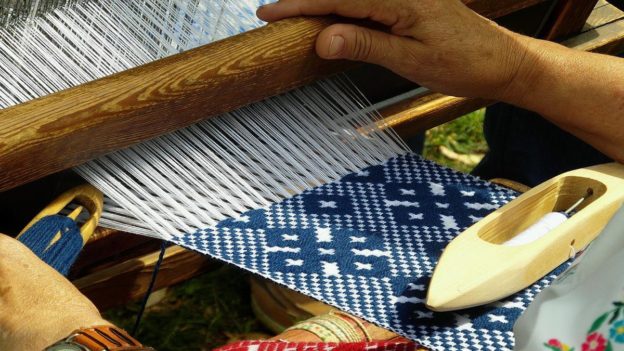Technology for MSMEs: There is a lack of information in the supply chain due to which small manufacturer belts have been ignored and not brought up to date with latest design knowledge about what they should be producing.
Technology for MSMEs: Today, India is host to over 200 million households that are directly or indirectly linked to the creative manufacturing industry. Even though it is still largely an agrarian economy, the fact that it has seen a shift towards an artisan-centric economy cannot be denied. The sector might primarily be rural but also witnesses a high concentration of micro, small and medium enterprises or MSMES, making it one of the most integral parts of the Indian Economy.
Keeping this in mind, it becomes important for the nation to build trust in its capability to serve the global economy and digitisation of the sector in the ecosystem becomes a catalyst for building trust. For instance, China, a few decades ago, brought in visibility and systems in place at the bottom of the pyramid for the millions of small manufacturers throughout their nation.
Like every other sector in the nation, the MSME industry is faced by its own particular challenges. One such problem is a paradox. India benefits from having some of the lowest mobile data rates in the entire globe. Due to this, even with a lack of constant access to electricity in the villages, they have successfully gained access to the internet. So why is there a gap between supply and global demand?
This bridge exists because there are not enough instruments available to support rural India’s market growth. Additionally, there is a lack of information in the supply chain due to which small manufacturer belts have been ignored and not brought up to date with the latest design knowledge about what they should be producing. Hence, there is a dire need to fill this gap in order to support the emergence of MSME in India.
Even with the problem posed, the MSME sector already accounts for 27% of our nation’s GDP, along with contributing around 50% to the Indian Export Market. While there is a substantial increase in the global demand for MSMEs, Bharat genuinely presents a huge capacity for supply. Over here, technology comes into play as it solves one of the most fundamental problems of finding the right resources.
It helps with the advancement of small-town manufacturers which in return aids them to compete not just in the domestic markets but also on an international stage. This crucial step would streamline the industry in a manner that contributes in increasing Bharat’s export GDP to rise to double digits from its present $3.5 billion, or 1 percent of the worldwide demand.
Lack of information is one of the main flaws in the industry, the producers are unaware of the changes being made in the global demand even though they are capable of servicing those orders. This issue can be addressed for the MSMEs through Bharat-specific technological solutions. Technology has allowed the mapping of the entire MSME ecosystem, which aids in better inventory management and makes rural and semi-urban firms lean, effective, and prepared to meet global demand in the best way possible.
Also read: Over 3,000 MSMEs led by women entrepreneurs shut post Covid: Govt data
Alongside this, with the help of technology, these MSMEs can now be discoverable in both domestic and international markets, stay up with design trends, and maintain the competitiveness of their products through open systems of sourcing and finance.
Additionally, it can also be said that the technological advancement of MSME can prove to reduce external risks and promote the commercialisation of the sector by providing a proper communication and supply chain between the global demand and the small belt manufacturers who during the present times, due to lack of latest design knowledge, are still producing things which are not consistent with the demand of international markets like the strong export belt places.
For example, presently, Indian export for crafts is limited to Moradabad, Saharanpur, Panipat, Tirupur, Coimbatore, Jaipur amounting to a total of $3.5 billion per annum. However, it is important to note that India’s total production appetite is over $160 billion. Digitisation in this scenario will enable districts like Pochampally, Bhagalpur, Amroha, Bhuj, Phulia to become the next textile hub like Panipat of our country and unleash this large market opportunity.
With this level of global demand, Indian MSMEs have enormous potential since their products can instantly become competitive on the international market by using technology to solve issues with funding, market access, designing, and raw material procurement. Technology will, hence, encourage innovation and help upscale MSMEs compete globally.
https://www.financialexpress.com/industry/sme/msme-tech-how-technology-is-paving-the-way-for-indias-rural-manufacturing-to-go-global/3013240/





